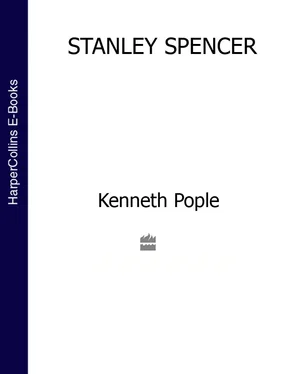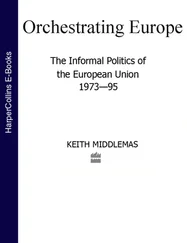After Will’s breakdown Ma won the right to promote her values rather than Pa’s in the upbringing of the youngest sons. She liked them to accompany her to Sunday worship in the village Methodist chapel. As the boys grew older, the fundamentalist nature of the chapel worship failed to provide the richer fare they needed. Stanley, on the road to discovering his ‘metaphysicals’, as Gilbert called them, pleads for help from Gwen:
You must understand that I have had a thorough grounding in Wesleyan Methodism. I have listened to a thousand sermons and would like something to counterbalance this. I would like to read about St Francis and St Thomas Aquinas. I have come out of the Chapel sometimes shaking with emotion. Gil and I used to get so excited that we could not face the prayer-meeting. By the time I had reached the prayer-meeting pitch I felt I was ready to break down. The end of the prayer-meeting was ghastly always, a man would say in a whisper: ‘Is there any poor wandering soul here tonight who has not heard the call of Jesus? He is passing by, passing by …’ A long pause. Of course, I used to feel that I had done wrong in not going up to the stand to acknowledge my conversion, as you are supposed to do. … About this there was a wretched clammy atmosphere, and it used to get well hold of you, and it has not gone yet. 4
Among the books Gwen lent him was a selection of John Donne’s Sermons. Stanley could not grasp all their meaning, but was excited by a glimpse of spiritual nourishment which seemed to him to exceed the doctrinal exhortation which had been his gruel till then. The earthly joy his Cookham-feelings gave him must, he thought, be equations of the eternal joy which is the Christian celebration of heaven. Those places in Cookham which are associated with such joy must therefore be ‘holy’.
Widbrook Common is, Florence tells us, the heaven which John Donne approaches in Stanley’s next major painting, John Donne Arriving in Heaven. Reading John Donne, Stanley seemed ‘to get an impression of a side view of Heaven as I imagined it to be, and from that thought [fell] to imagining how people behaved there. … As I was thinking like this I seemed to see four people praying in different directions.’ 5In the painting, heaven becomes an infinity in which the saints are placed in a compositional balance which reflects exactness of feeling. *The Common was a favourite picnic spot of the Spencers and well worth the walk there, even on a hot day, as Florence recounts:
Sutton Road [the main road towards Maidenhead from the ‘east end’ of the village] was an alleyed shadeless desert which must be traversed if one would win through to Widbrook Common, loveliest of commons, and when in the course of time … at Cliveden the old Duke of Westminster was succeeded by a gentleman named Waldorf Astor, the pilgrimage to Widbrook on hot summer days became well-nigh intolerable … for he stretched a glaring brick wall, of immense height it seemed to us, surmounted by broken glass, along Sutton Road, blotting out the view of Cliveden Woods which had until then helped our journey along. Mr Astor, familiarly known to us as Mr Walled-off Astor, was afraid, we were told, that his son would be kidnapped … perfectly preposterous in the familiar Cookham of our hearts. 7
The wall must still be ‘traversed’ if one wishes to reach Widbrook Common, now a nature reserve. But the Common has no cliffs. These, Florence tells us, are derived from the same Thames riverbank which appeared in The Fairy on the Waterlily Leaf. Since the two are geographically distant, Stanley is not being illustrative. He is not saying, ‘I see Widbrook Common as heaven.’ Instead he is assembling from his experience places in which he had mysteriously felt the sanctity of ecstasy, and is collaging or conjoining them to convey a feeling or concept of heaven. The places are not intended as symbolic or universal. They have no meaning outside his experience of them. He presumes we all have such places in our memories which evoke similar feelings for us, and that we are able to recognize that those he shows in his painting are but signposts to personal feeling. It is that feeling which he is trying to capture and to universalize.
Stanley presented his painting at the Slade for comment. It did not please Tonks, but it came to the attention of Clive Bell, who was setting up with Roger Fry the second of the two seminal post-impressionist exhibitions of those years in London. The first, in 1910 at the Grafton Galleries, had burst like a bombshell on a largely insular British public, creating a furore and dividing the art establishment into the reactionary and the progressive. Bell selected Stanley’s painting for inclusion in the 1912 exhibition also at the Grafton Galleries where in the English section it was hung with works by Wyndham Lewis, Duncan Grant, Vanessa Bell, Henry Lamb and Roger Fry to match the corresponding works of Cézanne, Gauguin, Matisse, Picasso, and Kandinsky in the Octagon. Critics, viewing it, suggested that it indicated Stanley’s endorsement of post-impressionism. Some pronounced that he had not got it quite right. 8
Once again Stanley was flummoxed. Others were defining his work by standards which had no meaning for him. The classifications of critics or art historians were their invention, not his. Stanley could be representative in so far as he took imagery from the real world; visionary in so far as he arranged it on the canvas in unexpected, often subconscious, juxtapositions; expressionist in so far as his aim was to convey personal emotion; symbolist in so far as he cast certain experiences in images which he will repeat as visual shorthand, and imitative in that he sought a visual style of the representational which, whether by instinct or example, came close in his early works to matching the attributes of impressionism. One such invoked the use of colour to replace the normal light and dark of shadow and sunlight, so that at its most exciting impressionist painting appears shadowless, its detail diffused not by light and shade but by luminous colour. In John Donne Arriving in Heaven Stanley used diffused colour in this way – except that he also inserted a sunlight which is fiercely low and hard, throwing pronounced shadows. Why? No doubt because he needed a device like the reflected flowers of The Fairy on the Waterlily Leaf to point up an emotion in the painting which was of importance to him. The strongest shadow, that of John Donne himself, zigzags to emphasize the verticality of the riverbank. The cliffs could be barriers. John Donne can see heaven beyond them, but he has not yet attained it. He is, writes Stanley, ‘walking alongside Heaven’; as, we may assume, was Stanley himself as he quietly read Donne’s sermons and poetry. *
It is at this point that Stanley departs from post-impressionism. In its perfect forms such painting deliberately avoids kinesis, drama, the sense of the onward march of events. It asks no questions, suggests no answers. It may portray activity, even action, but seldom intent. Each picture is a snapshot of a moment caught with subtlety but without regard for past or future. Respectful though Stanley was of the intensity of its concentration, such stasis could never fully satisfy a young explorer desperate in a sensed world of miracles and mystery to record his moments of discovery and illumination.
John Donne Arriving in Heaven is a totality which celebrates the excitement Stanley feels in journeying towards a concept of joy he knows exists. But in detail he is still a novice struggling through music and literature to master truths which, if they ever come to him on earth, will do so only through time and experience.
CHAPTER FOUR
Apple Gatherers
All my life I have been impressed with the idea of emergence – a train coming out of a tunnel, for instance.
Читать дальше









![Brian Thompson - A Monkey Among Crocodiles - The Life, Loves and Lawsuits of Mrs Georgina Weldon – a disastrous Victorian [Text only]](/books/704922/brian-thompson-a-monkey-among-crocodiles-the-life-thumb.webp)


